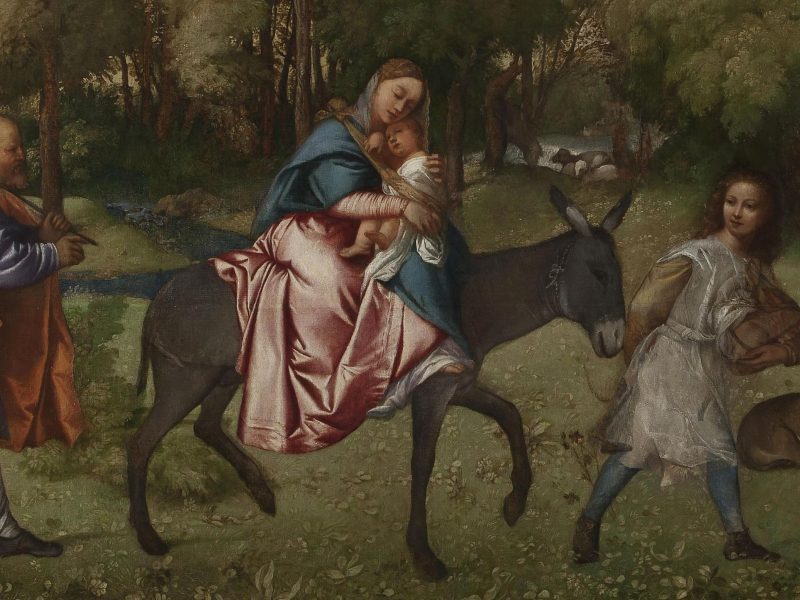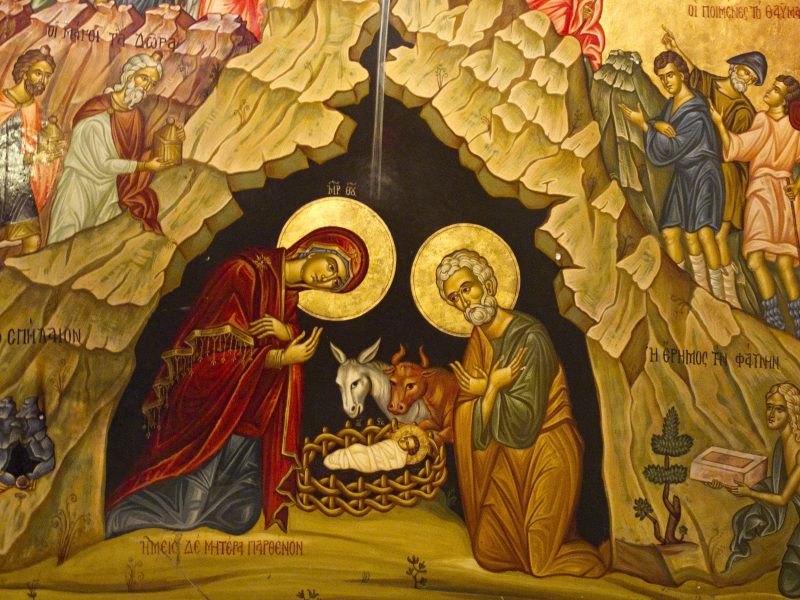
Ascension Thursday Homily
Feast of the Ascension of the Lord | Fr David McLean explains the significance of the Ascension and tells us not to underestimate its importance for our salvation.
The Feast of the Ascension obviously falls between the beginning of Easter season with Easter Sunday itself and the conclusion of Eastertide on Pentecost Sunday. Perhaps it can seem to have a lower profile than Easter Sunday and Pentecost, because it falls in the middle in that way: it suffers a squeeze. That, however, would be down to human perception, which can of course be faulty. The significance of the Ascension should not be underestimated and is crucial to appreciating the incarnation and the human hope for salvation.
The significance of the Ascension is fully appreciated in the world of art. Some Ascension art can be underwhelming, such as a pair of feet portrayed on the ceiling of a Church. You are supposed to look up, see these feet sticking out of the ceiling, and realise it is a portrayal of Jesus ascending. It probably works to some extent. More inspiring art though helps us conceive the human and divine Jesus going before us to his Father in heaven. He is going to the divine realm where he belongs, but depictions of his physical ascent remind us that he is human like us, and where he goes we can hope to follow.
Images of Jesus’s physical ascent serves as a final declaration of Jesus’ humanity. Jesus has real physical presence in this world and in heaven. They say to us that Jesus ascended to heaven with his humanity, and not just his divinity. Jesus is a human being who is already with the Father in heaven. There is a union of God and humanity in heaven. If one human being is in heaven, it is possible for others.
The Ascension of Jesus is the beginning of our salvation. Where Jesus has gone, we hope to follow. Even the bad art works. All we need to do is follow the feet. Perhaps, however, the beauty and inspiration of good art is more likely to encourage us to make a leap of the imagination and grasp the divine realities.
Also, if the Ascension is about a real human being with the Father in heaven, then it also reminds that in Jesus, God was present with us here. The Ascension marks the last appearance of Christ among us. Perhaps those feet are supposed to remind us that he was really with us. The Feast of the Ascension provides reassurance on two fronts. Yes, human beings really can be with the Father in heaven. Yes, God really was here with us.
The Ascension certainly seems to have reassured the apostles. Afterwards they went out to the whole world and ‘preached everywhere’, confident that the Lord was still with them despite his physical departure. Jesus promised the apostles and us that he would be with us always, and that he would send the Holy Spirit to witness to the truth.
Jesus’ human body may be in heaven, but there is a sense in which his body continues here, and that is the body of Christ that is his Church. We make up the body of Christ and make Jesus present in our communion together. And the Holy Spirit resides with us. So perhaps, in that pair of feet we can envisage humanity united with God in heaven, the divine Jesus who was with us here, and the Christ who continues to be present in our Church. If the image of the feet helps us appreciate all that, then they serve their purpose.
Could we have Easter, or even the entire Gospel message, without the Ascension? An argument can perhaps be made in favour, but it is more likely that the Ascension is a crucial part of Easter. On Easter Sunday we celebrate reconciliation, victory over sin, and Jesus’s resurrection. That doesn’t finish the story and would be a premature ending. Jesus belongs with his Father. We need to know that we are not abandoned. We need to know what our salvation story is. That is where the Ascension comes in. A divine Jesus ascends to be with his Father where he belongs, but he is also human. If it is possible for the human Jesus, then it is possible for us. Jesus tells us he has ‘gone before’, implying that we are to follow.
The efficacy of the incarnation still does not end there. Once there, Jesus is still a human being sitting next to his Father heaven. A human being who can intercede for us with the Father. Jesus also ascends to heaven to inherit his kingdom, the kingdom of peace and justice that he promised us. We don’t only have Jesus interceding for us, but we have that kingdom to look forward to. With the coming of the Holy Spirit at Pentecost, God accompanies us on our journey to that divine kingdom. The Ascension is a crucial part of the Easter story and our path to salvation.
Readings: Acts 1:1-11 | Eph 4:1-13 | Mark 16:15-20
Photograph by Fr Lawrence Lew OP of the one of the carved panels in the reredos of the chapel in the Dominican House of Studies, Washington DC.
Sorry, the comment form is closed at this time.



A Website Visitor
Thank you – very helpful
A Website Visitor
Thanks for the spiritual nourishment
A Website Visitor
I appreciate Fr David’s insights. Thank you!